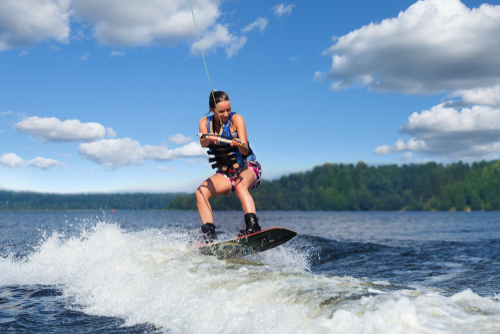
Surf, Sand, and Safety
COVID-19 may be changing how we work, learn, and spend time with family and friends, but it won’t change our everlasting relationship with the beach.
As much as we may love the beach, it is not uncommon to get injured from activities taking place on the sand and water.
Injuries can happen anywhere and anytime, however, so fear of injury should not stop you from enjoying your time by the seaside.
Instead, educate yourself on common injuries and prevention techniques, as well as important beach and ocean safety tips.
Common Beach and Ocean Injuries
The first step in practicing proper beach and ocean safety is understanding the perils you are at risk of coming into contact with, and how they vary depending on the activity.
Surfing
Surfing is generally regarded as a safe sport, with a majority of injuries being non-life-threatening. Research suggests that lacerations and sprains account for about 75% of all common surfing injuries.
Lacerations are jagged, torn, surface-level skin wounds that vary in depth, size, and severity. Sprains are a stretch and/or tear of a ligament (the strong band of connective tissue that connects one end of a bone to another).
Following lacerations and sprains in terms of frequency are dislocations and fractures.
Dislocations are joint injuries that force your bones out of position. Fractures are broken bones, and can be open (bones protruding out of skin) or closed (breaks contained within the skin).
Wakeboarding
Wakeboarding typically involves aggressive stunts performed at high speeds, so the risk for injury is higher than that of surfing.
 The most common wakeboarding injuries include:
The most common wakeboarding injuries include:
- Anterior Cruciate Ligament (ACL) Tears
A tear to the ACL, which is one of four ligaments in the knee joint that hold the bones together and provide stability.
- Shoulder Dislocations
When the head of the upper arm bone (humerus) is either partially or fully out of the socket (glenoid).
- Ankle Sprains
When the ligaments of the ankle stretch or tear.
- Lacerations
Jagged tears of the skin that—when concerning wakeboarding—commonly occur on the head and face.
Beach Volleyball
Although not a water sport, beach volleyball is arguably one of the more riskier beach-related sports due to it taking place on uneven sand. As a result, one can sustain a number of common beach volleyball injuries, including:
- Finger Injuries
- A jammed finger is when the tip of the finger is pushed back into the hand with blunt, sudden force, causing a stretch or tear in the finger’s ligaments.
- A dislocated finger is when the bones of the finger are forced out of their normal alignment.
- A fractured finger is when the bones of the finger break.
- Patellar Tendinitis (Jumper’s Knee)
Inflammation of the tissue that connects the kneecap (patella) to the shin bone (tibia).
- Lower Back Pain
Because of the constant squatting, stretching, and reaching, muscle and ligament strain in the lower back is very common. This type of injury is moreso associated with repetitive play rather than a sudden injury.
- Rotator Cuff Injury
Another injury primarily associated with the constant overhead motion of spiking and setting a volleyball, rotator cuff injuries typically fall into one of three categories:
- Rotator Cuff Tendonitis
When one or more of the tendons that connect the muscles in the shoulder are irritated and swollen.
- Partial Rotator Cuff Tear
When one or more of the tendons partially tear, causing them to fray.
- Full-Thickness Rotator Cuff Tear
When the tendon fully tears to the point of becoming severed from the bone.
Important Beach and Ocean Safety Tips
The injuries and activities described above are just the tip of the iceberg (or surfboard in this case). These are important safety measures to keep in mind when participating in maritime activities:
When surfing…
- Surf in areas patrolled by lifeguards.
- Hold onto your surfboard at all times to avoid the surfboard hitting nearby swimmers.
- Avoid surfing in areas crowded with other surfers and swimmers.
- Do not surf at night or in stormy weather conditions.
- Be aware of your surroundings.
- If you “wipeout,” be sure to cover your head with your arms for protection.
- Learn how to identify, avoid, and escape rip currents.
When wakeboarding…
- Wear protective gear, such as a wetsuit, helmet, and life jacket, to decrease the chance of lacerations.
- Choose a tow rope with a plastic and/or foam coating.
- Ensure the foot bindings are made of strong, high-quality materials that properly support your ankles.
- Do not wakeboard at night when your sight is impaired and you cannot spot hazards in the water.
- Select a driver you trust, as they play a vital role in your overall safety.
When playing beach volleyball…
- Protect your eyes from the sun with UV-blocking sunglasses or a well-fitted hat.
- Stay hydrated with water or an electrolyte-infused drink.
- Wear sunscreen and lip balm.
- Be aware of hazards in the sand, such as shells, broken glass, and wood.
- Communicate with your team when going for the ball to decrease the chance of collision.
Keep in mind that most of the above tips are applicable to all maritime sports and activities.
Head to the Beach Confidently With EmergeOrtho—Triangle Region
The Sports Medicine Specialists at EmergeOrtho—Triangle Region are experts on beach and ocean safety. Through years of practice and education, our board-certified, fellowship-trained team have gained a masterful understanding of maritime injuries, treatments, and prevention techniques, and are standing by to help Triangle Region patients enjoy their summer activities safely.
To learn more, self-schedule an appointment now. Or, call us any time at (919) 220-5255.







